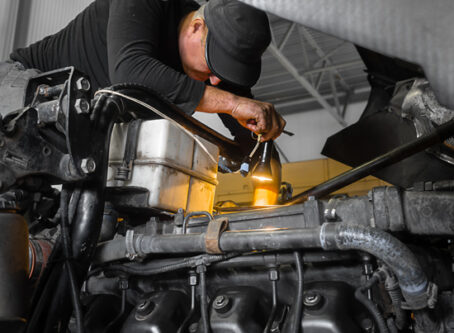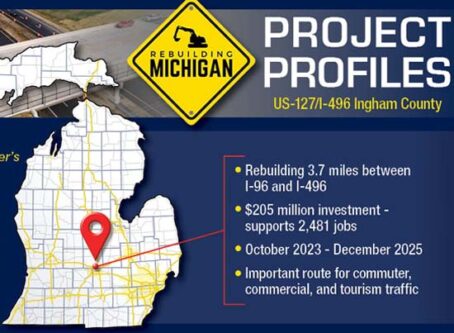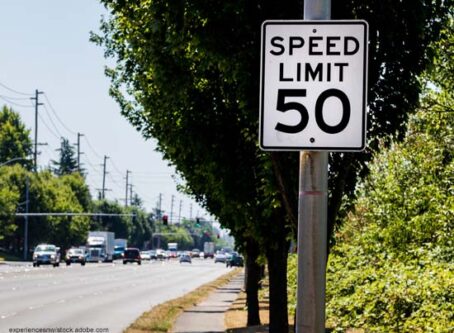Bills in nine states call for speed limit changes
Activity continues in statehouses from coast to coast to revise speed limit rules. Legislation includes the elimination of speed limit differentials for cars and trucks and increased speeds for all vehicles.
The Owner-Operator Independent Drivers Association says roadways are safest when all vehicles are allowed to travel at the same rate of speed. The Association does not advocate for a specific speed limit.
Indiana
Indiana law allows cars to drive 70 mph on rural interstates while vehicles in excess of 26,000 pounds are limited to 65 mph.
One Senate-approved bill would do away with the speed limit differential on the state’s fastest roadways.
Sen. Jim Tomes, R-Wadesville, recently told a Senate committee it simply makes sense to adopt uniform speeds for all vehicles.
“The logic behind it is if everyone is flowing at the same speed, traffic moves better and you don’t have people stacking up on each other getting behind a slower-moving vehicle,” Tomes said. “I’m thinking this makes sense to let these trucks run even speed with cars and pickup trucks.”
IMTA voices concern
The Indiana Motor Truck Association opposes the rule change.
Robert Haag, IMTA chairman, told legislators it is important to resist the urge to drive faster. He
added that trucking operations would not adjust equipped speed limiters.
“An increase in Indiana’s speed limit for heavy vehicles will not change their decision to limit speed based on their fleet’s individual characteristics,” Haag said.
Andrea Zimmerman of the Indiana Department of Transportation has provided information to lawmakers about a joint research study by the agency and Purdue University on speed limits. The study suggested uniform 70 mph speed limits would reduce crash frequencies in the state by about 20%.
The bill, SB13, has been sent to the House Roads and Transportation Committee where the issue has struggled to keep momentum in recent years.
OOIDA supports pursuit
Doug Morris, OOIDA director of safety and security operations, says that speed differentials are based on a flawed belief that slower trucks equal safer trucks. He adds that is simply not the case.
“It’s encouraging to see the legislative pursuit in Indiana to correct a law that was flawed in nature and does nothing to improve highway safety,” Morris said.
While the Senate appears to be more educated on the issue than their House counterparts, Morris said “old politics” are likely to disrupt the effort once again. He cites leadership that is opposed to the idea instead of learning about the issue.
OOIDA continues to call on truck drivers to make their voice heard on the issue with their state representatives.
Montana
The Montana Senate has approved a bill to give the state’s Transportation Commission full authority to change speed limits throughout the state.
Montana has an 80-mph speed limit for cars and a 70-mph limit for trucks on rural interstates. State law permits the commission to lower speed limits or to leave them unchanged.
Sponsored by Sen. Barry Usher, R-Laurel, SB452 would add the authority to raise speed limits.
Dustin Rouse, Montana Department of Transportation highways and engineering administrator, testified during a recent hearing on the bill that during a speed differential review it was determined that split speeds can be problematic.
“One of the things we found is in locations that have high large commercial vehicle, semi use, that mix if you have that speed differential can lead to an increase in crashes.”
He said the state DOT acted in 2019 to address safety concerns resulting from the speed differential on U.S. 212 between Crow and the Wyoming line. As a result of a safety review, the speed limit for cars was lowered from 70 mph to 65 mph to match the truck speed limit.
Usher added there are roads around the state that need to have speed limits modified.
“Our Department of Transportation, their goal is to be safe, but it’s also to keep commerce moving,” he said.
Morris said it is commendable Rouse educated lawmakers on the “real-world issues related to speed differentials.”
The bill awaits assignment to committee in the House.
New Mexico
One New Mexico House bill would put into place a speed limit rule for vehicles traveling in the far-left lane of highways.
The House Transportation, Public Works and Capital Improvements Committee voted to advance a bill to require vehicles to drive no more than 10 mph below the posted speed limit. Violators would face $100 fines.
Exceptions would be made for situations that include when no other vehicle is directly behind the vehicle in the left lane or when traffic conditions and congestion make it impractical to drive in the right lane.
John Romero, NMDOT highway operations support division director, said during a recent hearing that speed differential is problematic.
“Speed differential is a known cause of accidents,” Romero said. “It causes vehicles to shift lanes erratically.”
HB348 awaits further House consideration, but time is running out. The regular session is scheduled to adjourn on March 18.
New York
New York permits all vehicles to travel 65 mph on interstate highways and other limited access roads.
A Senate bill would authorize speeds for cars and trucks to increase to 70 mph. Specifically, the state DOT and the New York Thruway Authority would be permitted to implement the change.
Sen. Tom O’Mara, R-Big Flats, wrote in a bill memo the change would keep New York in line with maximum speeds in many other states.
“The majority of states across the country have state speed limits that exceed 65 mph,” O’Mara wrote. “New York has failed to keep up with the rest of the country by not adopting a more efficient speed limit.
“This bill would correct this inefficacy by allowing for a 70-mph speed limit where appropriate.”
The bill, S2209, is in the Senate Transportation Committee. The Assembly version, A5044, is in the Assembly Transportation Committee.
North Dakota
The North Dakota Senate Transportation Committee recently held a hearing on a bill to increase speed limits for all drivers along certain highways.
State law authorizes speeds of 75 mph on Interstates 29 and 94. Speeds along four-lane divided highways are set at 70 mph. Two-lane highways are posted at 65 mph.
Sponsored by Rep. Ben Koppelman, R-West Fargo, HB1475 would authorize vehicles to travel 80 mph on interstates.
Advocates at the statehouse say the change would allow for more efficient travel through the state. Koppelman adds that six nearby states already permit 80 mph travel.
“This increase in speed will be a phased in approach that will allow DOT to initially increase speeds in all the areas that can easily handle the speed, and work toward upgrading other areas that can handle the speed with minor improvements,” Koppelman testified.
Critics have concern about drivers using the proposed threshold to further push the limit in excess of 80 mph.
Koppelman said that simply is not true.
“Studies have shown that as speed limits increase, drivers do not necessarily increase their speed by the same amount,” he said. “The bottom line is people drive the speed that they feel safe and comfortable at, not the speed limit.”
Others worry that many large trucks have their speed governed and a wider speed gap would result between affected trucks and other vehicles.
The committee took no action on the bill. House lawmakers already approved it on a 65-29 vote.
Oregon
A 2-year-old state law lets Oregon cities apply for the authority to designate speed limits on local roads. The same authority is given to Clackamas and Multnomah counties.
The state Department of Transportation is responsible for delegating which locales receive the authority to set speeds on roads under their jurisdiction. Speeds must be set under criteria adopted by the highway agency.
One House bill would add Marion County to the list of counties with jurisdiction to designate speeds on highways within the county’s jurisdiction.
Marion County includes the city of Salem.
The bill, HB3188, is in the House Transportation Committee.
South Carolina
One bill in the South Carolina House addresses concerns about slow-moving traffic on the state’s fastest highways.
State law prohibits slow-moving vehicles from impeding “the normal and reasonable movement” of traffic. Exceptions are made for when reduced speed is necessary for safe operation or in compliance with law.
The South Carolina DOT and local authorities are also authorized to establish minimum speed zones. Affected areas can be set when an engineering and traffic investigation shows that slow speeds on a portion of highway consistently impede the normal and reasonable movement of traffic.
Sponsored by Rep. J. Todd Rutherford, D-Richland, H3364 would raise the minimum speed limit along the state’s interstates. Specifically, the bill reads that along highways with a maximum posted speed of 70 mph the minimum speed would be 50 mph – up from 45 mph.
The state DOT previously estimated that about 230 signs would be needed to post a new minimum speed limit. The cost was estimated at $200,000.
The bill is in the House Education and Public Works Committee.
Tennessee
A legislative pursuit in Tennessee would authorize a 5-mph increase in vehicle speeds along controlled-access state and interstate highways.
HB621/SB1125 would increase the maximum speed limit on affected roadways from 70 to 75 mph.
The change is estimated to cost the state $118,000 to change relevant speed limit signs around roadways.
A fiscal note attached to the legislation references a 2022 study of raising speed limits from 70 to 75 mph in Kansas. The change took place in 2011.
The study concluded there was not a significant difference in the number of total crashes, vehicle miles traveled, or the total gross domestic product from before and after the increase.
Advocates for Highway and Auto Safety counter such claims. The group says that raising speed limits leads to more deaths.
HB621 could come up for committee consideration as early as Wednesday, March 15.
Texas
Speed limits are also a topic of multiple Texas bills.
The first bill would authorize the use of variable speed limits.
Variable speed limits use speed limit signs that change to slow drivers to avoid creating heavy traffic congestion. The Texas A&M Transportation Institute provides information on how the process works.
HB1885 would allow the temporary lowering of a speed limit to address inclement weather, congestion, road construction, or any other condition that affects “orderly movement of traffic.”
The bill clarifies that variable speeds must be based on an engineering and traffic investigation.
Variable speeds could not be set less than 10 mph below the posted speed limit.
A nearly identical bill, HB1639, does not include the 10-mph provision.
Both bills are in the House Transportation Committee.
West Virginia
The pursuit of faster speeds in West Virginia has died.
A Senate bill sought to increase the maximum speed limit on rural portions of interstate.
State law permits 70 mph travel on rural interstates. In 2019, a House resolution approved by the legislature gave the West Virginia Department of Transportation authority to increase the speed limit on interstate highways from 70 mph to 75 mph.
SB34 called for authorizing 80 mph speeds on interstate highways and four-lane, limited-access highways. The bill provided an exception for portions of those roadways passing through the city limits of municipalities.
The bill never left committee. LL
More Land Line coverage of state news is available.









